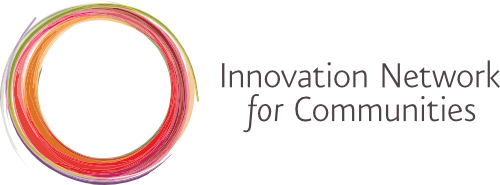What’s in Your City’s Wallet? Financing Urban Climate Adaptation–An INC Research Project Overview

Background and Goals
With the acceleration of city efforts to plan and implement adaptation strategies, there is a growing need to develop and expand capacities to finance adaptation—through a variety of public, private, and nonprofit resources. A variety of innovations are underway, but they typically focus on capital for specific infrastructure projects and/or a comparatively narrow range of financing mechanisms (e.g. green bonds).
This project takes a broader view across financial sectors and financing mechanisms, broadly defined. It seeks to reveal trends and opportunities that are not visible to more narrowly cast efforts. In particular, this research project is intended to develop actionable insights into ways to expand and accelerate the access of U.S. cities to diverse financial resources. It is hoped this research will produce insights into a framework for an urban “operating system” for adaptation finance: a structural and institutional model that would align and integrate financial mechanisms to meet a broad range of city adaptation needs.
The outputs are intended to inform the various practice communities of cities, NGOs, private financial sectors, and governments seeking to develop capacities and innovations for urban climate adaptation. The framework developed through this project can help decision-makers select financing mechanisms suitable to specific city needs and support the field of practice in identifying gaps in the existing range of financing solutions.
Project Team and Funders
This research is being undertaken by the Innovation Network for Communities (INC) and Meister Consultants Group, A Cadmus Company (MCG-Cadmus) and in partnership with Ramboll. The project is funded through the generous support of the Kresge Foundation and the Summit Foundation.
Scope
The project research plan casts a wide net initially, covering the range of climate effects to which cities are responding, and cities’ various adaptation vulnerabilities and needs. It will cover multiple types of financial sectors: private debt, public revenues, private and public insurance, climate risk liability, and philanthropy. The primary focus is on mechanisms available and/or applicable to U.S. municipal governments; however, this may involve leveraging successful models used in other countries which could be deployed in the U.S.
Process Overview
The project team will draw on a detailed literature review, interviews with experts and practitioners, and input and review from a range of project advisors in city government, private investment, climate finance research, community-based capital entities, NGOs/philanthropies, and development agencies. These activities will inform two primary deliverables:
- A matrix of relevant financing mechanisms, including both existing mechanisms or those under consideration or development in U.S. municipalities. This will help catalogue available tools and mechanisms and serve as an analytical tool for identifying patterns and gaps. For each mechanism, the matrix will detail important financial characteristics as well as additional elements that cities value such as “co-benefits” produced, equitable development, and synergies with GHG reduction efforts.
- A research report that analyzes the matrix/map’s implications for accelerating and institutionalizing the development of urban climate adaptation financing. The report most likely will focus on three questions: (a) How might innovations under development be accelerated, for instance through collaborations between cities and financial institutions or between financial sectors? (b) What gaps are there in current urban climate financing efforts that warrant more attention and how might they be explored? (c) What capacities—technical expertise and institutional arrangements—will cities and financial sectors need to develop or enhance for large-scale, sustained climate adaptation financing?
Both deliverables will be available for public release and dissemination. Project completion is expected by mid-2018.


